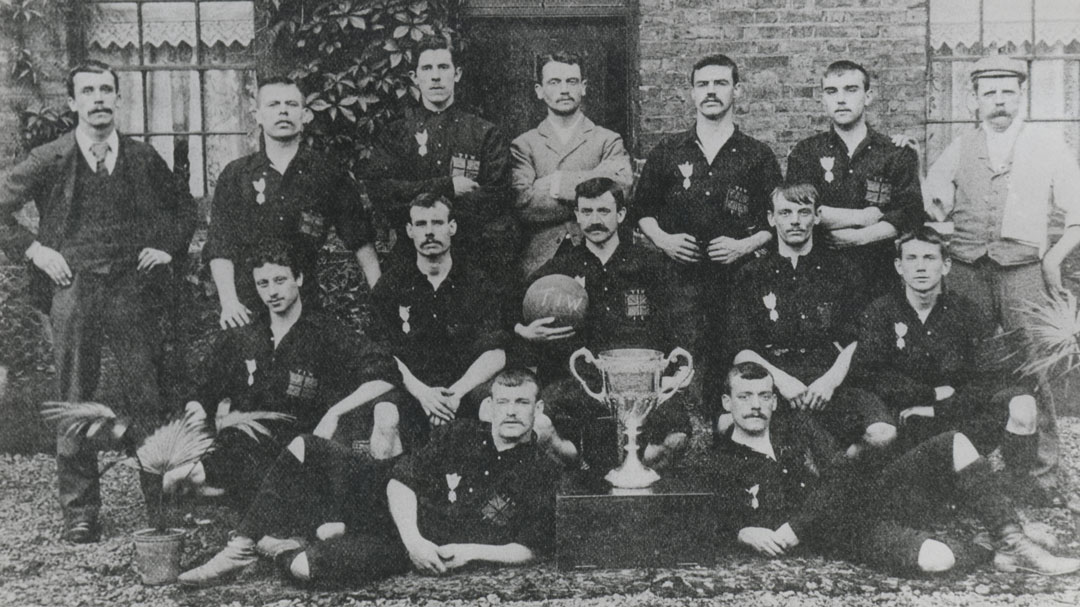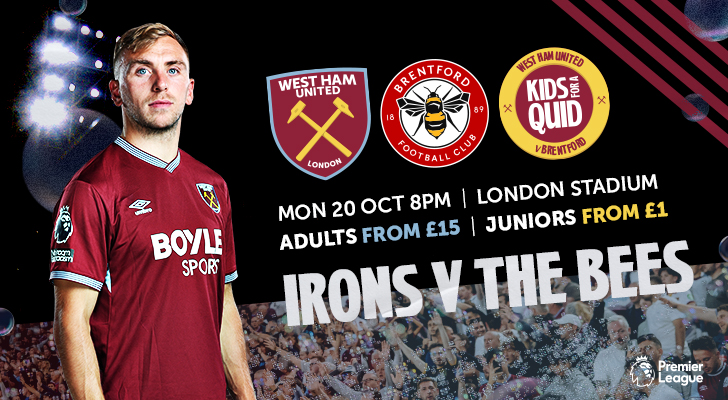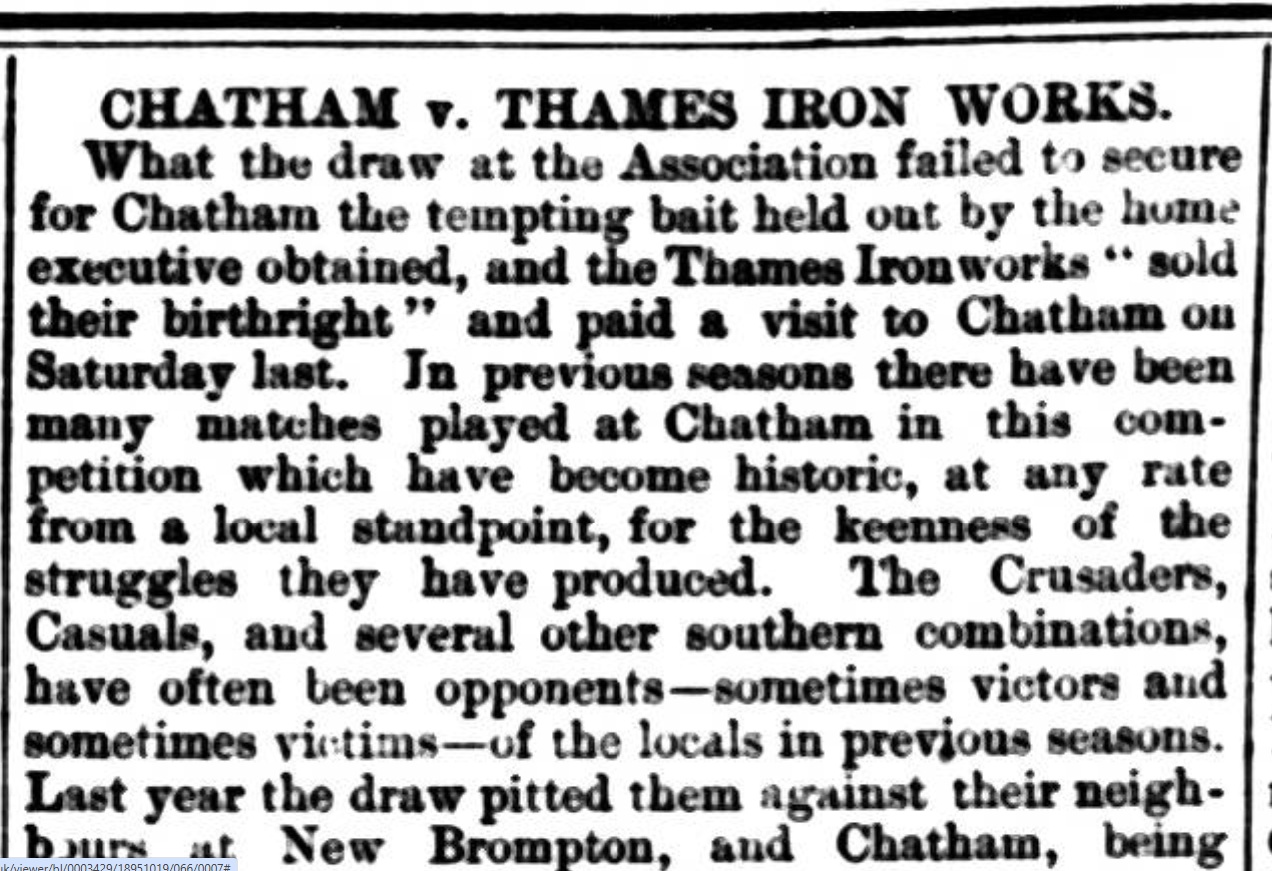We delve deep into The British Newspaper Archive to look at cuttings that shed light on West Ham United’s history...
It may have ended in defeat, but Thames Ironworks’ English Cup tie at Chatham on 12 October 1895 was an historic fixture in West Ham United’s history.
For it was the first competitive match contested by the team following its formation in June of that year by Thames Iron Works & Shipbuilding Company foreman Dave Taylor and managing director Arnold Hills.
Some 50 workers had signed up to join the new club, and they played their first friendly fixture against Royal Ordnance on 7 September 1895.
Five weeks later, Thames Ironworks travelled to Maidstone Road stadium to face Southern League club and Kent League champions Chatham, who themselves had turned professional that summer.
A curious 3,000 spectators turned out to see their newly professional team take on an ‘unknown quantity’ in Thames Ironworks, who had not entered a league in their inaugural season.
A long report in the Gravesend & Northfleet Standard explained: “The team with whom they (Chatham) had to cope were an unknown quantity here. Their constitution and record were shrouded in mystery, except so far as their name indicated their origin. Besides this, the present season is the first year of their entrance to the English Cup Competition and, therefore, their strength was altogether a matter for speculation.
“The Chatham Committee were therefore acting wisely when they selected their full strength for the encounter, and left nothing to chance.”

Chatham fielded a number of the players who had won the Kent League title the previous season, while the Kent club already had English Cup pedigree, having reached the quarter-finals in 1888/89 before being defeated by Football League club West Bromwich Albion.
Thames Ironworks, of course, fielded eleven debutants for this inaugural competitive fixture, namely goalkeeper John Watson, full-backs Henry Tull and A.Williams, half-backs Johnny Stewart, Barnabas French and Walter Parks, and forwards John Woods, George Sage, James Lindsay, Thomas Freeman and Arthur Darby.
The visitors actually started the better of the two teams, with Darby testing home goalkeeper Jones and Lindsay going close.
Chatham then took control and the lead through centre-forward Millar. Willams forced Jones into a ‘brilliant save’ and Sage shot narrowly wide as Ironworks sought an equaliser, only for Millar to double Chatham’s advantage by heading in Dickinson’s cross.
Local Member of Parliament Horatio Davies, who owned the Pimm’s drinks, arrived at half-time to watch the action and saw Chatham make the tie safe in the second period.
Despite the ‘Ironworkers showing good defence’, Lewis made it 3-0 with a ‘high dropping shot which Watson could not reach’, then set up Lawrence to score a fourth.
“The Ironworks men were fast fagging, and Chatham fairly penned them in,” observed the Gravesend & Northfleet Standard. Despite their hard work, however, the visitors conceded a fifth goal to Stanford late on.
When referee Mr W.J. Wilson brought the game to an end, Chatham had won 5-0, but Thames Ironworks could hold their heads high for their determined performance.
Brighter days would lie ahead, with Thames Ironworks ending their first season by winning the West Ham Charity Cup. Following the reformation of the Club as West Ham United in 1900, the Irons would win the FA Cup in 1964, 1975 and 1980 and also reach the final in 1923 and 2006.

